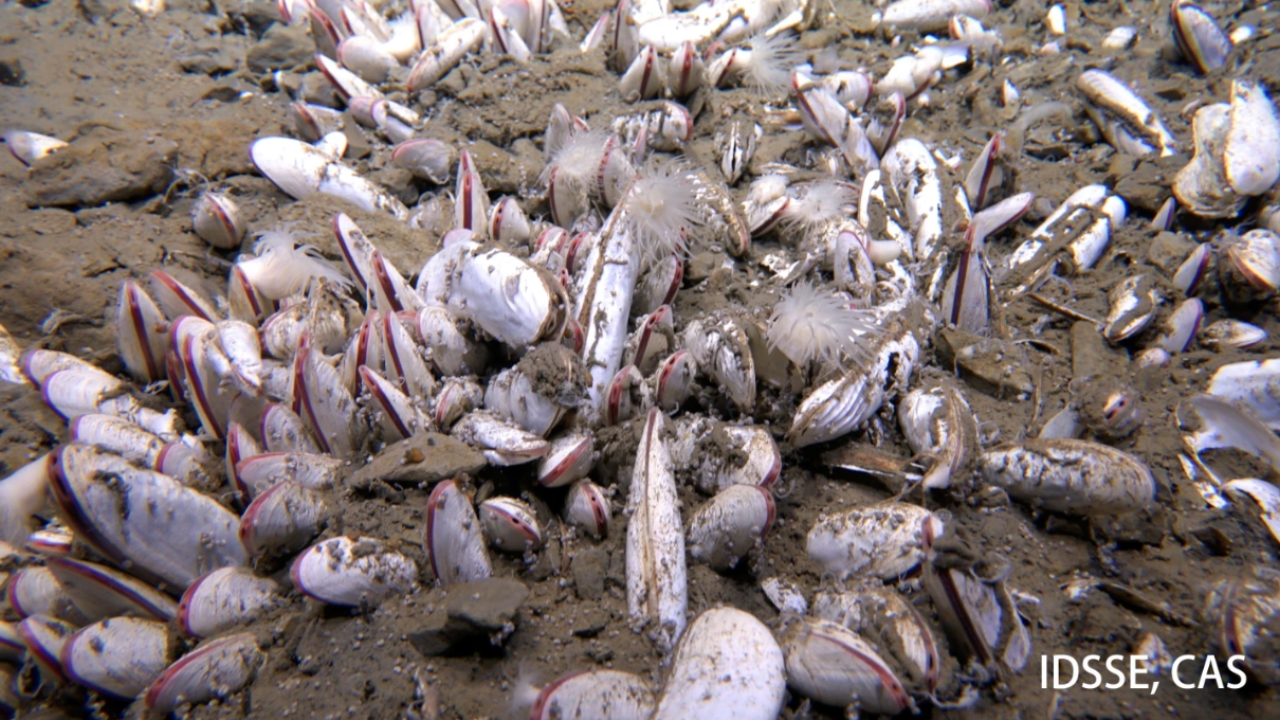
©(Institute of Deep-sea Science and Engineering, Chinese Academy of Sciences via AP)
Pre-reading questions:
I will read each question. Then, please answer them.
講師がそれぞれの質問を読むので答えましょう。
- Do you like learning about sea animals?
- Do you think animals can live where there is no light?
Vocabulary:
I will read the words, meanings, and sample sentences. Then, repeat after me.
単語、意味、例文を読みます。講師に続いて音読しましょう。
- deep /deep/
- machine /muh-SHEEN/
- energy /EN-er-jee/
- explore /ik-SPLAWR/
- unknown /uhn-NOHN/
[adjective] – far down from the top or surface
The treasure was buried in a deep hole in the ground.
[noun] – a piece of equipment with moving parts used to do work
The farmer used a machine to cut the wheat.
[noun] – the power used to do work or make things move or grow
Plants use sunlight to make energy for growing.
[verb] – to travel through a place to learn about it
The students want to explore the nearby forest this weekend.
[adjective] – not known or identified
They discovered an unknown species of bird in the jungle.
Article reading:
Please read the whole article. Then, I will check your pronunciation and intonation.
記事を音読しましょう。講師はあなたの発音とイントネーションを確認します。
A new science report says big sea animals are living very deep in the Pacific Ocean. The animals were found in two places called the Kuril–Kamchatka and Aleutian trenches. These places are in the northwest part of the Pacific Ocean. Scientists from China and Russia used a special machine to go more than 31,000 feet (9.5 kilometers) under the sea. They found tubeworms and mollusks in very cold, dark places with strong water pressure. People used to think that big animals could not live in places like this. This new report shows that they can. The animals live by using a process called chemosynthesis. Tiny microbes turn carbon in the ocean into chemicals with energy. These chemicals help bigger animals live. Some animals eat the microbes. Others share the food with them. One expert said this is a new way of life that scientists did not expect. Another scientist, Julie Huber, said the area was too hard to explore before. Now, this new information can help scientists learn more about sea life and look for other unknown places in the deep ocean.
True or False:
Read the sentences and identify if they are true or false based on the article.
文章を読んで、記事に基づいて正誤を答えましょう。
- Scientists found big sea animals deep in the Pacific Ocean.
- The sea animals were found in the Atlantic Ocean.
- Scientists from Japan and the U.S. did the research.
- The scientists used a special machine to go deep under the sea.
- The animals were found in warm and sunny places.
Fill in the blanks:
Choose the correct word from the table, then fill in the blanks.
適切な言葉を選んで空欄を埋めましょう。
| deep | machine | energy | explore | unknown |
- The team entered an ______ area of the ancient ruins.
- The body gets ______ from food to stay alive and active.
- They found the cave in a ______ part of the forest.
- She fixed the ______ that makes paper cups.
- We plan to ______ a new city during our vacation.